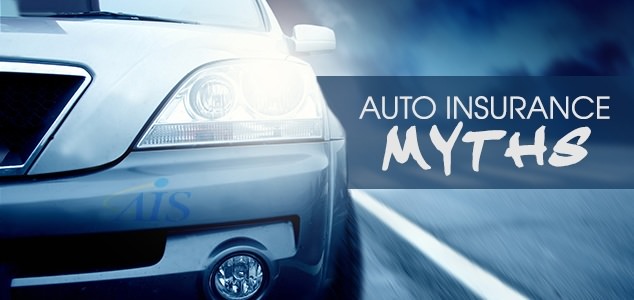The availability of 24-7 Internet access has led to the proliferation of many myths concerning auto insurance. Unfortunately, these misconceptions lead many to avoid buying policies that they need or to make buying decisions based on falsehoods. We want to clear up a few of the most common myths so that our clients have the fact-based information that they need to make informed decisions.
Newer Cars Are Stolen More

It may make sense that newer cars are more desirable, thus more likely to get stolen, but the fact is that older cars are actually more at risk. Newer models have superior theft-deterrent systems, making them harder to steal. Older vehicles are easier to steal and are there is a larger market for their parts. Surprisingly, insurance rates on older vehicles can be high if they are one of the most commonly stolen ones.
Insurance Companies Can Charge Whatever They Want

Although insurance companies are for-profit businesses, the industry is highly regulated to prevent harmful pricing strategies. In most states, insurance companies must file documents detailing how they determine their rates with state insurance commissions. Regulators then ensure that the companies follow those rate structures.
Comprehensive Coverage is Comprehensive

Many vehicle owners are confused by the term comprehensive coverage, and they probably should be. The name itself is a bit of a misnomer, in that it doesn’t cover everything. Comprehensive coverage pays for things like fire, theft, vandalism, weather damage and collisions with animals. It doesn’t cover driving your vehicle into a wall. Collision coverage is for that type of damage.
Red Cars Cost More to Insure

This myth stems from rumors that red cars stand out more on the roadway, so police pull them over more. This leads many vehicle owners to believe that they are more costly to insure. Both of these facts are myths. Red cars don’t get pulled over more often, and insurance companies don’t use vehicle color when setting prices.
If a Friend Wrecks Your Car, His or Her Insurance Covers It

This is a costly myth to believe, because it depends on the insurance laws of your state. In most states, the â€coverage follows the vehicleâ€, so your policy is the one which pays first. Even in states where your friend’s insurance would pay, there are circumstances where you would have to pay too. For example, if the damage was extensive, impacted other property or involved injuries, your friend may not have enough coverage to pay for it all. In this case, your insurance would kick in to pay the remainder.
Our Insurance Specialists at AIS are happy to answer any questions or clear up any other Insurance myths you may have heard: feel free to give us a call today! (888) 772-4247.
The information in this article was obtained from various sources. This content is offered for educational purposes only and does not represent contractual agreements, nor is it intended to replace manuals or instructions provided by the manufacturer or the advice of a qualified professional. The definitions, terms and coverage in a given policy may be different than those suggested here and such policy will be governed by the language contained therein. No warranty or appropriateness for a specific purpose is expressed or implied.


